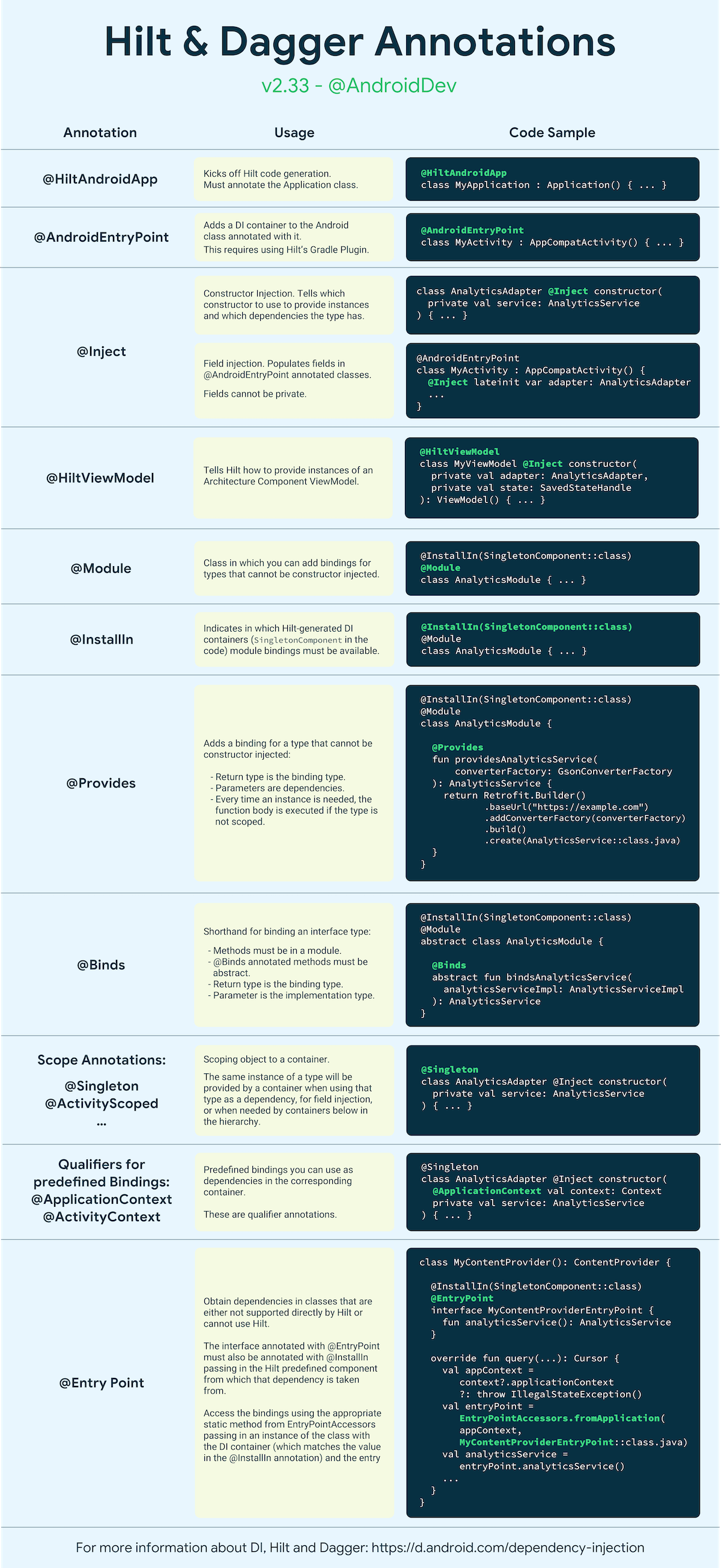通过此备忘单,您可以快速了解不同 Hilt 和 Dagger 注解的功能及其使用方法。备忘单也有可以下载的 PDF 格式版本。
Hilt 和 Dagger 注解备忘单
本页面上的内容和代码示例受内容许可部分所述许可的限制。Java 和 OpenJDK 是 Oracle 和/或其关联公司的注册商标。
最后更新时间 (UTC):2025-07-27。
[null,null,["最后更新时间 (UTC):2025-07-27。"],[],[]]

